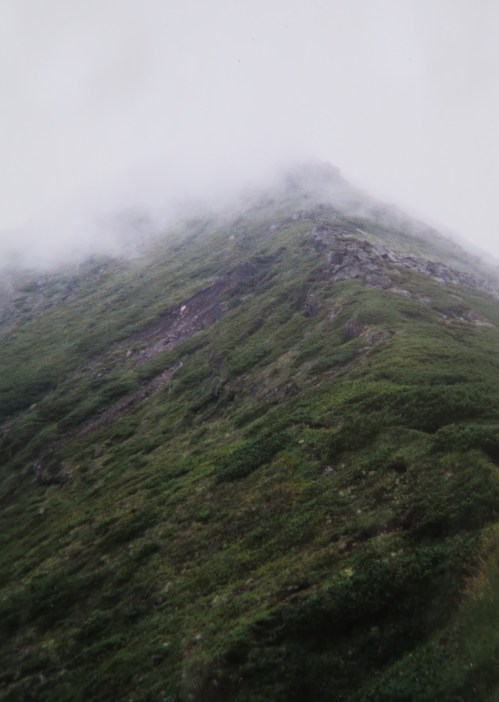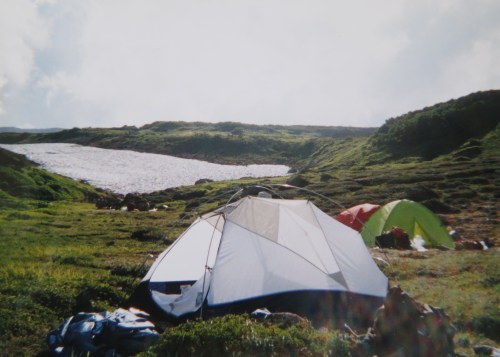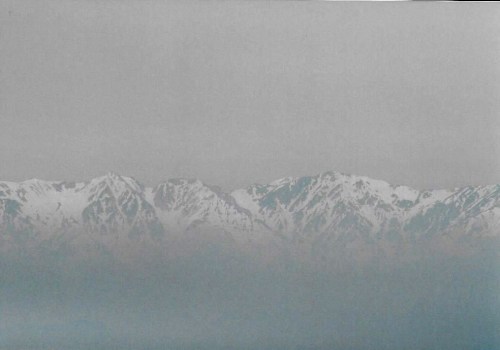The mountains facing the Sea of Japan rarely get a break. The Siberian winds whip up moisture on their journey from Russia, depositing immense loads of powder snow that lingers until the arrival of the summer rain front, which keeps the Hokuriku region locked tight in a slippery vice grip. When it’s not raining or snowing, the peaks seek shelter behind veils of low-lying cumulus, withholding the vistas to all but only the most dedicated few. I had studied the meteorological charts for weeks, looking for a rare clear-weather window to explore Tsuruga’s most hallowed peak: the beech-crowned heights of Mt. Nosaka, ‘the wild hill’.

My chance came on a Tuesday. Not the best of timing, but when that window opens, you have no other choice but to tempt fate and jump out. I boarded the Limited-Express Thunderbird train at the luxurious hour of 9am for the 90-minute sprint to Tsuruga, where the Obama line regurgitated me on the steps of Awano station. The cloudless sky burned a glorious shade of blue as I marched up the paved road to the A-frame bungalows marking the entrance to the forested path. Puddles of black ice waited to catch the unwary driver or, in my case, the lone hiker off-guard. Several times I slipped on the horizontal verglas, saving myself from a likely bruise with some quick handwork with the trekking poles.

I soon hit snow, but held off on the crampons until there was unobstructed ground cover, and slowly marched along the easy-to-follow path. Judging by the well-worn prints, several climbing parties were already on their way to the top. The route crossed a stream several times before scaling a small metal staircase which marked the true start of the climb. Here I latched the 6-pointers firmly to my soles and continued my vertical progress towards the ridge. Through gaps in the bare tree limbs I could begin to see the contours of Tsuruga city expand directly below: it resembles most port towns in Japan except for the unusual concentration of nuclear power plants hidden in the coves to the west.
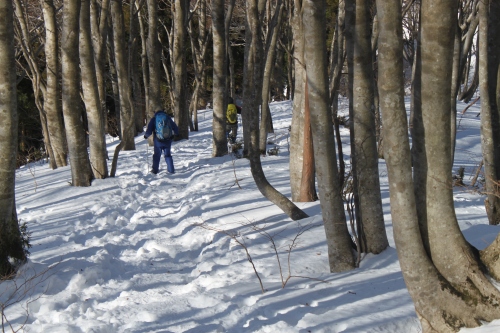
After an hour of brisk ascending I topped out near the ridge and got my first unobstructed views of Hakusan’s curvy mastiff. It appeared as if the baker had gone overboard on the frosting for this gargantuan birthday cake to the deities. The peak was well on the way to an average snow year, and if the current rate of precipitation continues, it could very well set a new record for snow depth. Early January, however, is much too early to make such predictions. Besides, I had a mountain ahead of me to climb.

At my first rest point, I met a lone hiker on his way down from the summit. “This is the best January weather in over 5 years,” remarked the tan-skinned elderly gent sporting a thick white beard. Despite the icy conditions, he was wearing only a pair of rubber rain boots and opted for the thickness of the untouched powder rather than the slick grooves of the main trail. He told me it would take about half an hour to reach the summit from here, even though the maps suggested a conservative time of 50 minutes.
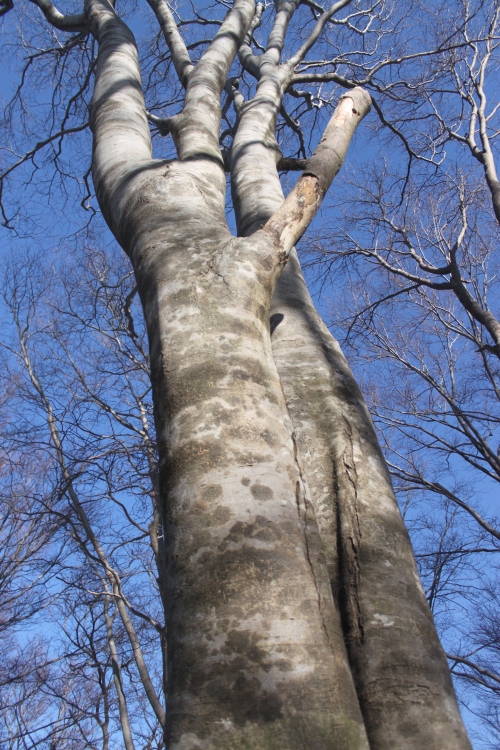
From here I reached the ridge, clambering over a series of false summits through a tunnel of elderly beech trees accustom to the stinging gales of winter. I soon spied the roof of the summit emergency hut protruding from the top of the next rise, and sure enough, about thirty minutes since leaving my haunches, I topped out to some of the best panoramic views I’ve seen in Kansai. The mountains of Gifu pierced the sky sharply, while a long strand of cloud hid the Kita Alps from view. Mt. Ibuki and the rest of the Lake Biwa Orchestra belted out a silent tune, while further to the west the peaks of northern Kyoto Prefecture begged for attention. That was still one area I had yet to explore, as access made a day-approach without an automobile all but impossible. I chatted with another group seeking shelter from the winds in the emergency hut. They were all from Tsuruga, and were quite surprised that I had come all the way from Osaka just to climb their local mountain. I explained that Nosaka was indeed one of the Kansai Hyakumeizan. They laughed that it was included on the list: “this is Hokuriku, not Kansai.” They had a point.

Deciding to play it safe, I headed down preciously the same way I had climbed, forgoing any shortcuts off the mountain. I’ve taken enough risks on snow-capped peaks trying to shave a few minutes off a hike. The way down was actually more challenging than the climb, as the crampons threatened to send my ankles into contorted positions that the tendons were not designed to accommodate. Once I reached the river again, I took off the irons for the walk back to the pavement. One of the hikers I had met in the hut offered me a ride to Tsuruga station, where I was just able to make the train back to Osaka.

I had now completed 71 of the Kansai 100, which left me with a new challenge: reach magic number 75 before the start of the rainy season. Time to start more intensive planning.
Read Full Post »








